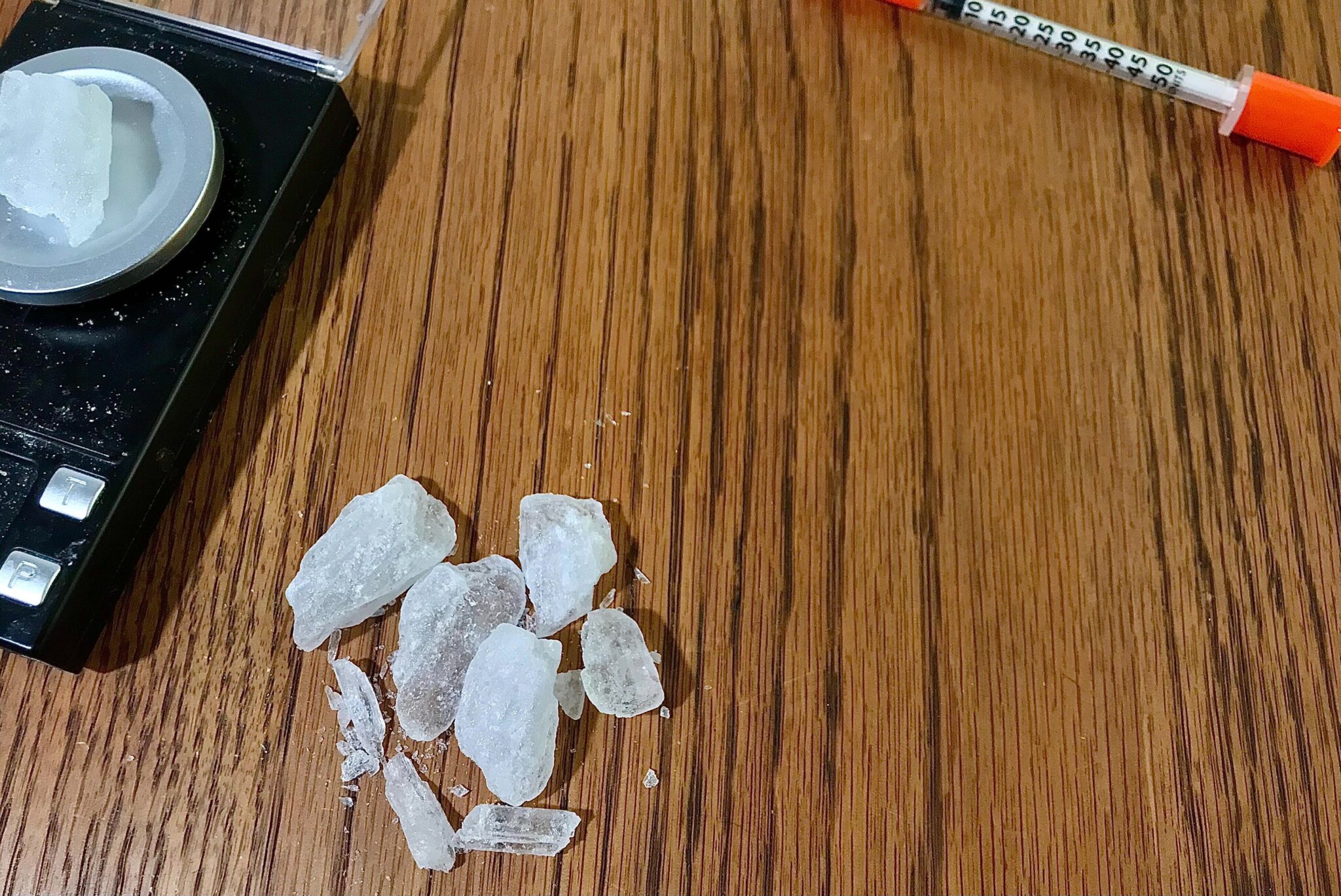Withdrawal from opioids is so thoroughly studied that the process is regularly referenced in media and pop culture. Many symptoms are clearly visible to people without direct experience of their own, and those symptoms—sweating, shaking, vomiting—are the ones that signify “withdrawal” in the public consciousness.
Withdrawal from stimulants is less straightforward. Lethargy, fatigue, apathy, irritability, dehydration, loss of physical balance, inability to speak or read or focus. Long-term meth withdrawal is its own matter, but everyone who uses meth chronically at some point experiences being cut off for a couple of days. It might be because you’re in jail, or your supplier is in jail, or you’re out of town, or out of money. For those times, there are a few harm reduction techniques that can make things a bit more bearable.
Using meth increases the amount of dopamine released into your system, as well as the amount that stays there for however long the meth stays there too. So as your brain and body work to regulate those unusually higher levels, some of your dopamine receptors get shut down to compensate. The problem is that whenever you eventually stop adding meth into your system, and those dopamine levels start to drop down, you’re left with fewer receptors able to receive dopamine from any source at all. So you need to get it wherever you can.
Nicotine
An infinite number of things can increase dopamine levels: alcohol, sex, exercise, nutrient-rich foods. But if we take out the ones that aren’t reliably accessible and feasible for people in meth withdrawal, then we’re left with about three. The first is nicotine.
Like just about everyone else I was ever in jail or prison with, if I had any money the first place I’d spend it was cigarettes. Institutional settings probably limit you to combustible cigarettes or chew, but on the street you might have access to safer alternatives like vapes.
Withdrawal used to take my cigarette smoking from a pack and a half per day to over three. While I still recommend nicotine to keep you functional enough to at least stay safe during withdrawal, there are other ways for those who prefer to avoid smoking.
Sugar
The second dopamine-booster usually within reach is sugar. This one is pretty self-explanatory because the concept of a “sugar rush” is one almost everyone is already familiar with. Sugar, briefly, makes you feel good.
Like nicotine, sugar tend to increase levels of not just dopamine, but also serotonin and norepinephrine and endorphins in general. These help us manage pain, both physical and psychological.
NoDoz (or Generic Caffeine Pills)
The third staple is caffeine. No amount of caffeine will get someone in meth withdrawal up and moving again, but eating a handful of caffeine pills often will clear up some of the side effects, starting with the constant headache.
Meth use spikes your blood pressure, and if you use chronically then over time your body will adjust to its new normal. As meth leaves your system your blood pressure drops back down, but now your equilibrium is off because it hasn’t yet adjusted, too. Hence the headache.
If NoDoz isn’t available, anything over-the-counter with “caffeine” and “acetaminophen” on the packaging should work similarly. Usually you’re looking for migraine-oriented meds in the pain reliever aisle. I normally took about 10 at a time, repeating every couple of hours until access to meth resumed. Alternatively, you could wash down a handful of regular Tylenol with a ton of coffee or caffeinated tea.
Vitamin B12
Separate from the “smokes, sweets, coffee” trinity you learn in jail, there’s another resource that’s usually accessible and affordable: vitamins.
Though not withdrawal-specific, research does support a link between meth use and vitamin B12 deficiency. In the first hours of withdrawal I’d always try to pair the handful of NoDoz with the same amount of B12, to make the rest of the day more manageable.
But there’s an important caveat with this one: Make sure there’s food in your stomach before you take the B12—more than just a couple of bites. If that’s not possible, just pop them one at a time per the directions on the bottle. Larger doses don’t become toxic or otherwise dangerous, but taking vitamins on an empty stomach will just add to your discomfort for the next few hours, rather than alleviate it.
When people don’t see the withdrawal symptoms they expect, they tend to attribute what they do see to your character.
Meth withdrawal is met with the same sort of “invisible illness” stigma as depression, for example, or chronic pain. When people don’t see the symptoms they expect from someone in withdrawal—the gastrointestinal kind—they tend to take what they do see and attribute it to your character. You’re lazy, unfocused, unreliable, apathetic. You’re not sick; you’re just a bad person.
Ironically, whenever meth withdrawal is acknowledged at all it’s usually discussed in terms of pleasure and cravings and addiction. But dopamine deficiency is a physical process that results from a physiological dependency—which is separate from addiction, the same way opioid dependency isn’t the same as opioid addiction. You can enter withdrawal from antidepressants, for example, but that doesn’t mean you’re addicted to them.
Photograph courtesy of Kastalia Medrano




